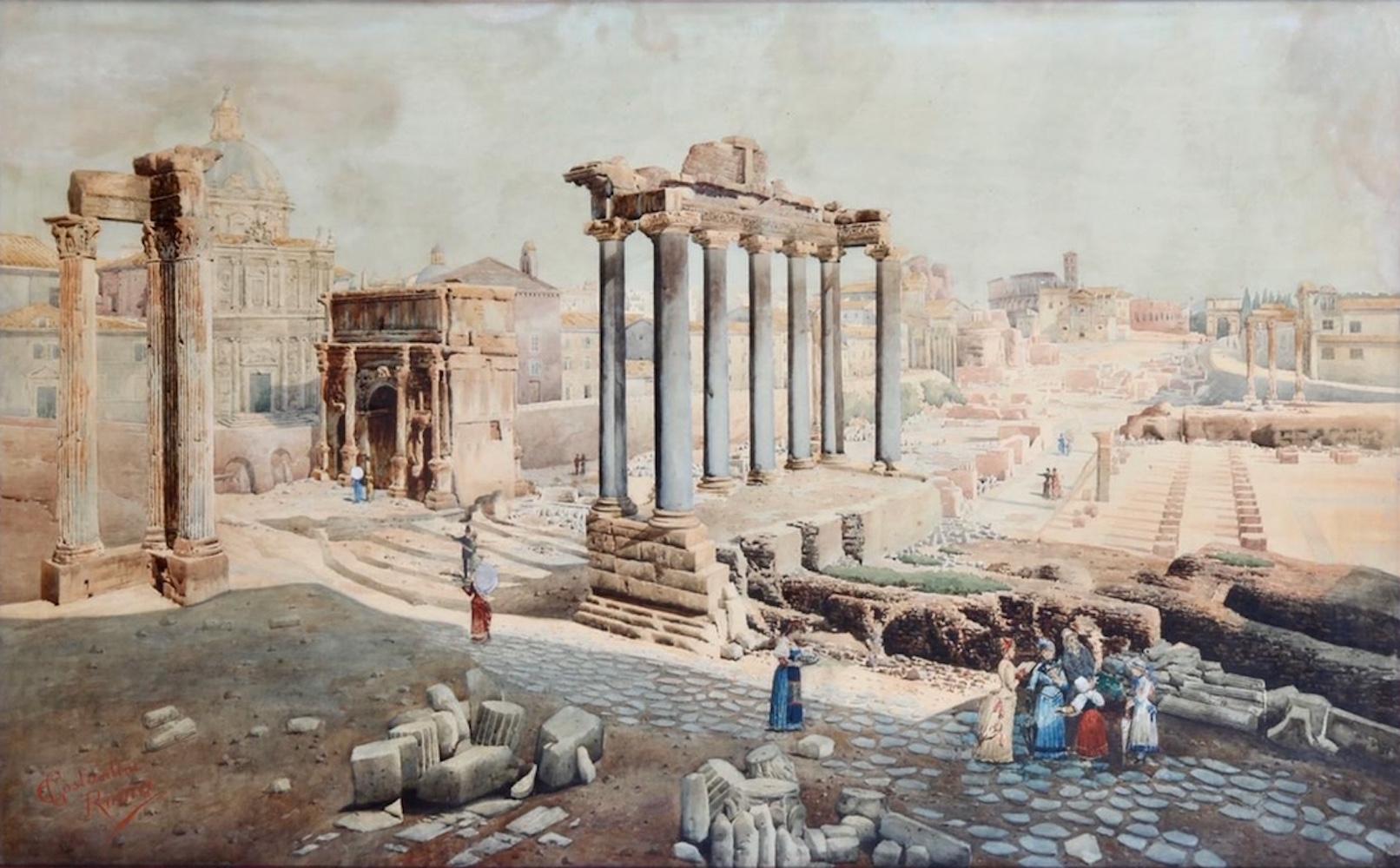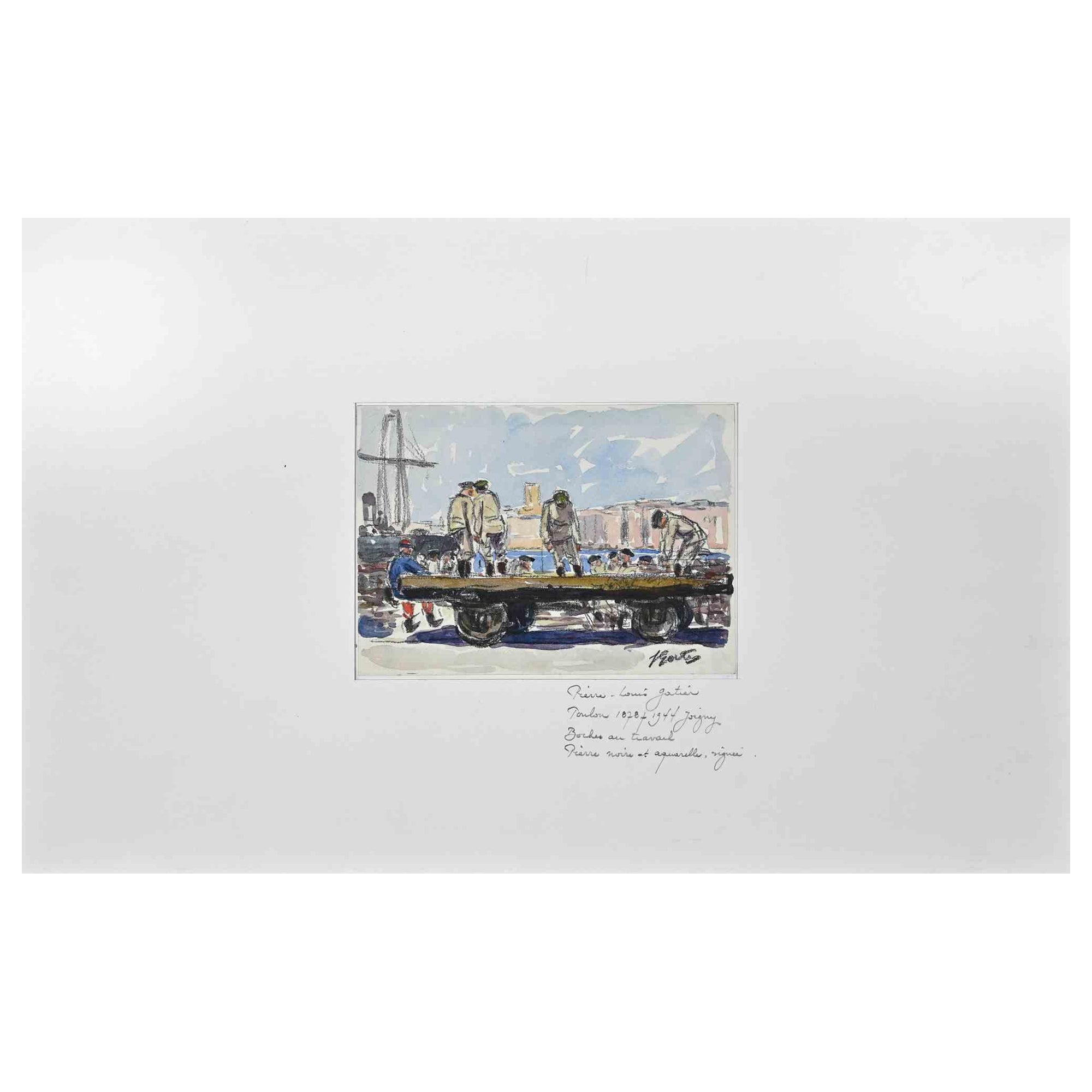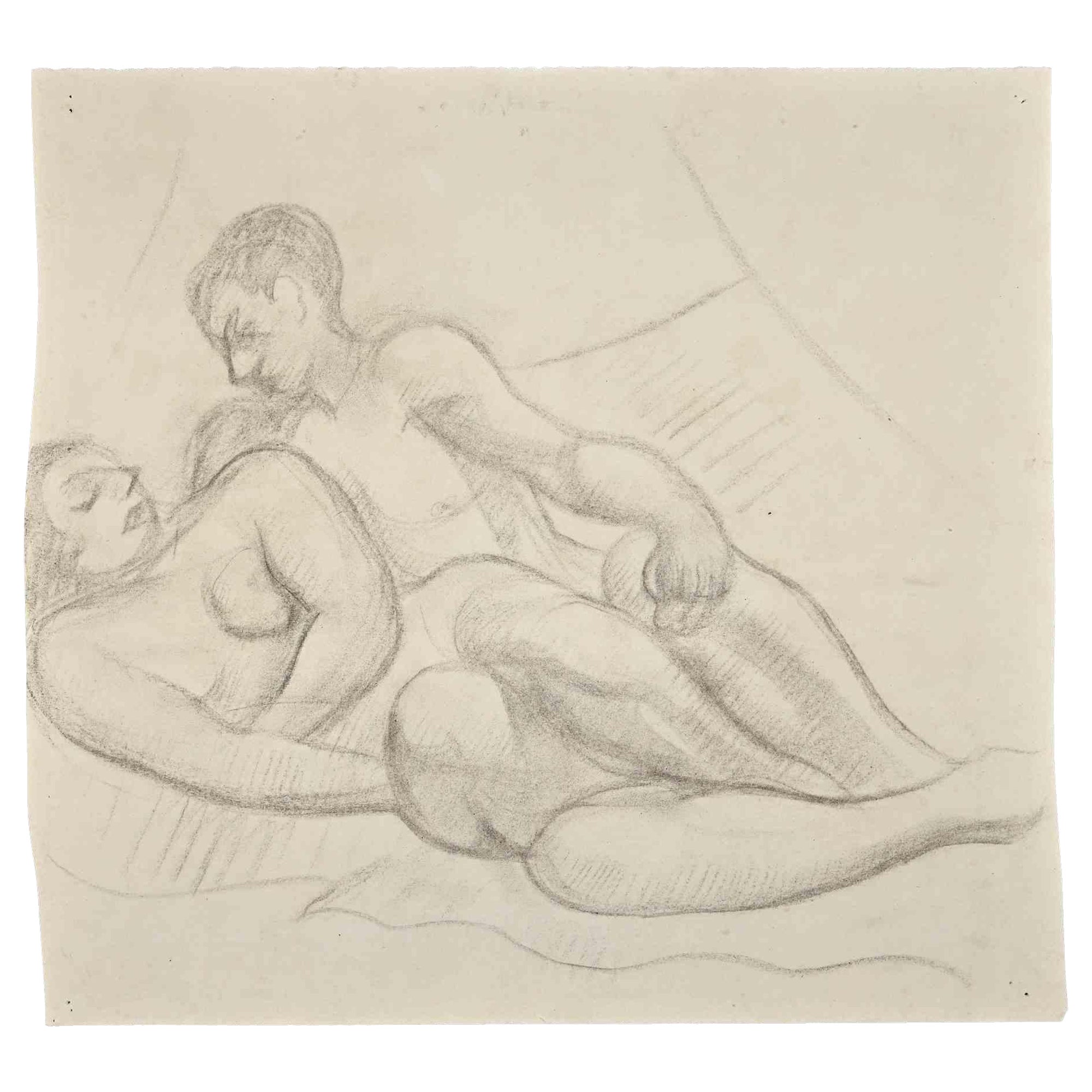Items Similar to Castel View on a Lake - Oil Paint - Late 19th Century
Want more images or videos?
Request additional images or videos from the seller
1 of 7
UnknownCastel View on a Lake - Oil Paint - Late 19th CenturyLate 19th Century
Late 19th Century
About the Item
Castel view on a lake is a modern artwork realized in the late 19th by a Dutch Artist.
Mixed colored oil painting.
Includes a gilded frame: 66.5 x 40 x 80 cm
- Creation Year:Late 19th Century
- Dimensions:Height: 22.05 in (56 cm)Width: 27.56 in (70 cm)Depth: 0.04 in (1 mm)
- Medium:
- Movement & Style:
- Period:
- Condition:Insurance may be requested by customers as additional service, contact us for more information.
- Gallery Location:Roma, IT
- Reference Number:
About the Seller
4.9
Platinum Seller
These expertly vetted sellers are 1stDibs' most experienced sellers and are rated highest by our customers.
1stDibs seller since 2017
6,827 sales on 1stDibs
Typical response time: 4 hours
- ShippingRetrieving quote...Ships From: Grasse, France
- Return PolicyA return for this item may be initiated within 14 days of delivery.
More From This SellerView All
- Landscape - Oil Painting by Robert Albert Genicot - 1940sBy Robert Albert GenicotLocated in Roma, ITLandscape with Houses is an original artwork realize by Robert Albert Genicot (1890-1981) in 1940s. Oil on cardboard. The painting is in very good conditions, signed by the artist ...Category
1940s Modern Figurative Drawings and Watercolors
MaterialsOil
- Basilica of the Sacred Heart of Paris - Oil Painting - 20th centuryLocated in Roma, ITBasilica of the Sacred Heart of Paris is an original painting in oil on cardboard realized by an Anonymous artist of the XX century. The State of preservation is very good. The ar...Category
20th Century Modern Landscape Drawings and Watercolors
MaterialsOil, Cardboard
- View of the Forum Romanum - Watercolor by Giuseppe Costantini - 1870sLocated in Roma, ITView of the Forum Romanum is an original modern artwork realized by the Italian painter Giuseppe Costantini (Nola, 1843 - Naples, 1893) in the seco...Category
1870s Modern Figurative Drawings and Watercolors
MaterialsOil, Watercolor
- Boucher au Travail - Original Drawing by Pierre Gatier - Mid 20th CenturyLocated in Roma, ITBoucher au travail is an original drawing in charcoal and watercolor realized by Pierre Gatier in the mid-20th Century. good conditions. Hand-signed. The artwork is depicted throu...Category
Mid-20th Century Modern Figurative Drawings and Watercolors
MaterialsWatercolor, Charcoal
- Couple - Original Drawing by Jean Delpech - Mid 20th centuryBy Jean DelpechLocated in Roma, ITCouple is an original drawing in pencil, realized in the Mid-20th Century by Jean Delpech (1916-1988). Good conditions. Jean-Raymond Delpech (1988-1916) is a French painter, e...Category
Mid-20th Century Modern Landscape Drawings and Watercolors
MaterialsWatercolor
- Boucher au Travail - Original Drawing by Pierre Gatier - Mid 20th CenturyLocated in Roma, ITBoucher au travail is an original drawing in charcoal and watercolor realized by Pierre Gatier in the mid-20th Century. good conditions. Hand-signed. The artwork is depicted throu...Category
Mid-20th Century Modern Figurative Drawings and Watercolors
MaterialsWatercolor, Charcoal
You May Also Like
- headwind, female figure w beach umbrella beach blue ocean sandBy Stephen BassoLocated in Brooklyn, NYOil on canvasCategory
2010s American Modern Landscape Drawings and Watercolors
MaterialsOil, Canvas
- African American Woman artist Mailou Jones Cezannian Cote d'Azur cubist villageLocated in Norwich, GBIf you are interested in African American Art and in Women in the Arts, I will certainly not need to introduce Lois Mailou Jones (1905-1988). Often associated with the Harlem Renaiss...Category
Mid-19th Century American Modern Landscape Drawings and Watercolors
MaterialsWatercolor, Gouache, Handmade Paper
- Gerald Mackenzie Leet - A Day at the Seaside - Design for a MuralLocated in London, GBGERALD MACKENZIE LEET (BRITISH 1913-1998) A Day at the Seaside – Design for a Mural Watercolour and gouache over pencil, arched top Framed 26.5 by 49.5 cm., 10 ½ by 19 ½ in. (frame size 47.5 by 69.5 cm., 18 ¾ by 27 ½ in.) Provenance: The artist’s estate; Harry Moore-Gwyn Fine Art. Gerald Leet was born in South London and studied at Goldsmiths’ School of Art 1929-1934, the Royal Academy of Art 1934-1937 and later at the Courtauld Institute. As a young man he shared a studio with Carel Weight. His first teaching appointment at Ealing School of Art in 1933 where he met fellow art student Denton...Category
Mid-20th Century Modern Figurative Drawings and Watercolors
MaterialsWatercolor
- Reginald Marsh "Brooklyn Bridge" NYC Modernism WPA Mid-Century Watercolor ModernBy Reginald MarshLocated in New York, NYReginald Marsh "Brooklyn Bridge" NYC Modernism WPA Mid-Century Watercolor Modern Reginald Marsh (American, 1898-1954) Brooklyn Bridge, 1940, Signed and dated Reginald Marsh May 1940 (lr), Watercolor over traces of pencil on paper , 15 x 22 inches sight. Reginald Marsh was born in Paris, France in 1898, the child of artist parents. He was born over a small cafe on Paris' Left Bank. He was brought to the United States in 1900 and was drawing before he was three. He studied art at Yale University and the Art Students League, during which time he worked primarily as an illustrator for New York newspapers and magazines. After studying in Paris in 1925 and 1926, he turned seriously to painting. In 1929 he was introduced to the egg-tempera medium, which he used extensively the rest of his life. Marsh's gusto for painting the bottom crust of society contrasted curiously with his background. His parents, both well-known artists, were steeped in academic traditions. He attended Lawrenceville Academy and Yale; perhaps this elite background made it possible to paint the earthy people he did with a journalist's objectivity. An admirer of Rubens and Delacroix, he disliked modernist art; indeed, his lifelong preoccupation was with people - enjoying themselves at beaches, at amusement parks, or on crowded city streets. Marsh was a second-generation Ash Can School painter and printmaker, best known as an urban regionalist. He spent his days sketching in small notebooks...Category
1940s American Modern Figurative Drawings and Watercolors
MaterialsPaper, Watercolor
- Women's Corner, Along the Cuyahoga River, Early 20th Century Cleveland SchoolBy Frank WilcoxLocated in Beachwood, OHFrank Nelson Wilcox (American, 1887-1964) Women's Corner, Along the Cuyahoga River, c. 1916 Watercolor and graphite on paper 21 x 29 inches Frank Nelson Wilcox (October 3, 1887 – April 17, 1964) was a modernist American artist and a master of watercolor. Wilcox is described as the "Dean of Cleveland School painters," though some sources give this appellation to Henry Keller or Frederick Gottwald. Wilcox was born on October 3, 1887 to Frank Nelson Wilcox, Sr. and Jessie Fremont Snow Wilcox at 61 Linwood Street in Cleveland, Ohio. His father, a prominent lawyer, died at home in 1904 shortly before Wilcox' 17th birthday. His brother, lawyer and publisher Owen N. Wilcox, was president of the Gates Legal Publishing Company or The Gates Press. His sister Ruth Wilcox was a respected librarian. In 1906 Wilcox enrolled from the Cleveland School of Art under the tutelage of Henry Keller, Louis Rorimer, and Frederick Gottwald. He also attended Keller's Berlin Heights summer school from 1909. After graduating in 1910, Wilcox traveled and studied in Europe, sometimes dropping by Académie Colarossi in the evening to sketch the model or the other students at their easels, where he was influenced by French impressionism. Wilcox was influenced by Keller's innovative watercolor techniques, and from 1910 to 1916 they experimented together with impressionism and post-impressionism. Wilcox soon developed his own signature style in the American Scene or Regionalist tradition of the early 20th century. He joined the Cleveland School of Art faculty in 1913. Among his students were Lawrence Edwin Blazey, Carl Gaertner, Paul Travis, and Charles E. Burchfield. Around this time Wilcox became associated with Cowan Pottery. In 1916 Wilcox married fellow artist Florence Bard, and they spent most of their honeymoon painting in Berlin Heights with Keller. They had one daughter, Mary. In 1918 he joined the Cleveland Society of Artists, a conservative counter to the Bohemian Kokoon Arts Club, and would later serve as its president. He also began teaching night school at the John Huntington Polytechnic Institute at this time, and taught briefly at Baldwin-Wallace College. Wilcox wrote and illustrated Ohio Indian Trails in 1933, which was favorably reviewed by the New York Times in 1934. This book was edited and reprinted in 1970 by William A. McGill. McGill also edited and reprinted Wilcox' Canals of the Old Northwest in 1969. Wilcox also wrote, illustrated, and published Weather Wisdom in 1949, a limited edition (50 copies) of twenty-four serigraphs (silk screen prints) accompanied by commentary "based upon familiar weather observations commonly made by people living in the country." Wilcox displayed over 250 works at Cleveland's annual May Show. He received numerous awards, including the Penton Medal for as The Omnibus, Paris (1920), Fish Tug on Lake Erie (1921), Blacksmith Shop (1922), and The Gravel Pit (1922). Other paintings include The Trailing Fog (1929), Under the Big Top (1930), and Ohio Landscape...Category
1910s American Modern Figurative Drawings and Watercolors
MaterialsGraphite, Watercolor
- Cows by Woodland Pond, Toledo, Ohio, Early 20th Century Cleveland SchoolBy Frank WilcoxLocated in Beachwood, OHFrank Nelson Wilcox (American, 1887-1964) Cows by Woodland Pond, Toledo, Ohio, c. 1920 Watercolor and graphite on board Signed lower right 22 x 30 inches Frank Nelson Wilcox (October 3, 1887 – April 17, 1964) was a modernist American artist and a master of watercolor. Wilcox is described as the "Dean of Cleveland School painters," though some sources give this appellation to Henry Keller or Frederick Gottwald. Wilcox was born on October 3, 1887 to Frank Nelson Wilcox, Sr. and Jessie Fremont Snow Wilcox at 61 Linwood Street in Cleveland, Ohio. His father, a prominent lawyer, died at home in 1904 shortly before Wilcox' 17th birthday. His brother, lawyer and publisher Owen N. Wilcox, was president of the Gates Legal Publishing Company or The Gates Press. His sister Ruth Wilcox was a respected librarian. In 1906 Wilcox enrolled from the Cleveland School of Art under the tutelage of Henry Keller, Louis Rorimer, and Frederick Gottwald. He also attended Keller's Berlin Heights summer school from 1909. After graduating in 1910, Wilcox traveled and studied in Europe, sometimes dropping by Académie Colarossi in the evening to sketch the model or the other students at their easels, where he was influenced by French impressionism. Wilcox was influenced by Keller's innovative watercolor techniques, and from 1910 to 1916 they experimented together with impressionism and post-impressionism. Wilcox soon developed his own signature style in the American Scene or Regionalist tradition of the early 20th century. He joined the Cleveland School of Art faculty in 1913. Among his students were Lawrence Edwin Blazey, Carl Gaertner, Paul Travis, and Charles E. Burchfield. Around this time Wilcox became associated with Cowan Pottery. In 1916 Wilcox married fellow artist Florence Bard, and they spent most of their honeymoon painting in Berlin Heights with Keller. They had one daughter, Mary. In 1918 he joined the Cleveland Society of Artists, a conservative counter to the Bohemian Kokoon Arts Club, and would later serve as its president. He also began teaching night school at the John Huntington Polytechnic Institute at this time, and taught briefly at Baldwin-Wallace College. Wilcox wrote and illustrated Ohio Indian Trails in 1933, which was favorably reviewed by the New York Times in 1934. This book was edited and reprinted in 1970 by William A. McGill. McGill also edited and reprinted Wilcox' Canals of the Old Northwest in 1969. Wilcox also wrote, illustrated, and published Weather Wisdom in 1949, a limited edition (50 copies) of twenty-four serigraphs (silk screen prints) accompanied by commentary "based upon familiar weather observations commonly made by people living in the country." Wilcox displayed over 250 works at Cleveland's annual May Show. He received numerous awards, including the Penton Medal for as The Omnibus, Paris (1920), Fish Tug on Lake Erie (1921), Blacksmith Shop (1922), and The Gravel Pit (1922). Other paintings include The Trailing Fog (1929), Under the Big Top (1930), and Ohio Landscape...Category
1920s American Modern Figurative Drawings and Watercolors
MaterialsWatercolor, Graphite
Recently Viewed
View AllMore Ways To Browse
Antique Oil Paint
Dutch Artists
40 X 80
Dutch Artists 19th Century
Lake Oil Painting 19th Century
Dutch Watercolor 19th Century
Fascist Italy
Italian Fascist
Mid Century Drawings Figure
Messina Italy
Matisse Watercolour
19th Century Pencil Drawing
Dramatic Watercolor Painting
Watercolor Nyc
French Charcoal Drawings
La Vita Vintage
Italian Fascist Art
Retro Fox Painting





